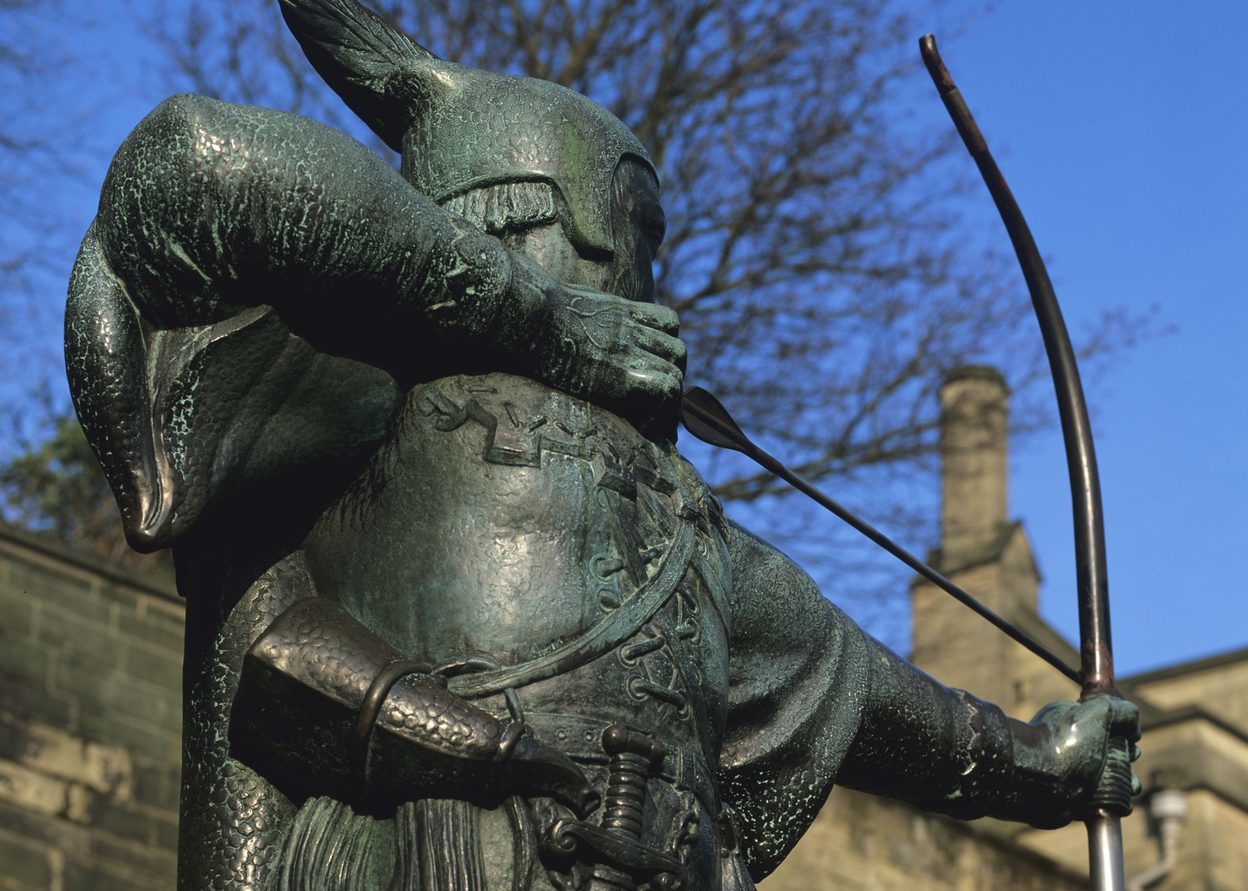
NINE centuries have passed since Robin Hood first found fame — and we still don’t know exactly who he was, or even if he existed at all!
A new book has gone further than most to get to the heart of the Green Man, the Outlaw of Sherwood, the man in tights who robbed the rich to help the poor.
And, as author John Matthews discovered, Robin’s popularity continues to grow, whatever the real facts hidden in the mists of time.
“The main sources for the legend of Robin Hood are a series of popular ballads,” says John, who’s written more than 100 books on myth, faery, Arthurian legend and the like.
“There is no denying that they were well-known by 1380, when Piers the Plowman was written by William Langland, with the lines: ‘I know not perfectly my paternoster, As the priest would sing: But I know rhymes of Robin Hood, And Randolf Earl of Chester.’
“So the ballads had already reached a degree of familiarity with a Christian cleric, who was more conversant with them than his prayers!
“Robin was seen as a good man, courteous, liberal, good-tempered and possessed of an almost royal dignity. He lives by stealing the King’s deer, but has the utmost respect and love for the King.”
Intriguingly, some folklore has the great man going about his business as a spirit, imp, sprite or faery, rather than a human being!
“An argument for Robin as a faery being is his name,” opines John.
“Hood or Wood are both appropriate — the latter because of the strong association of the faery folk with woodland, and the former for their traditional use of the hood as a garment to cover their heads.”
The Middle Ages, and how our ancestors celebrated spring and summer, saw the Green Man constantly involved.
“Once the May blossom flowered, a kind of divine madness took possession of the people of England!” admits John.
“Everyone, from kings to commoners, took part in celebrations of the dawning spring.
“Until at least the 1500s, they were ruled over by Robin Hood, to the extent that the celebrations became known as Robin Hood’s Games.
“Maid Marian was present, taking the role of the May Queen just as Robin assumed the guise of the May King.”
If he really was a man who helped the needy at the expense of the wealthy and corrupt, Robin also had no shortage of enemies. His own aunt, in fact, may have been behind his death.
“Distempered with cold and age, he had great pain in his limbs, his blood being corrupted,” says John of Robin’s twilight years.
“He repaired to the prioress of Kirklees, which some say was his aunt, a woman very skilful in physic and surgery.
“Knowing he was an enemy to the religious, she took revenge by letting him bleed to death.”
A sad end for such a hero. If he really ever existed!
Robin Hood, by John Matthews, is published by Amberley, ISBN. No. 978-1-4456-5601-4, price £20
READ MORE
New book explores the bizarre stories of the Victorian era, including the Dog-Faced Man

Enjoy the convenience of having The Sunday Post delivered as a digital ePaper straight to your smartphone, tablet or computer.
Subscribe for only £5.49 a month and enjoy all the benefits of the printed paper as a digital replica.
Subscribe